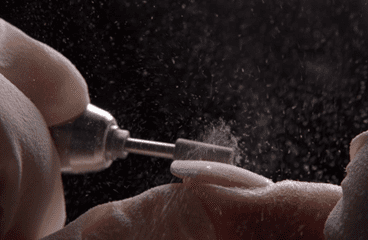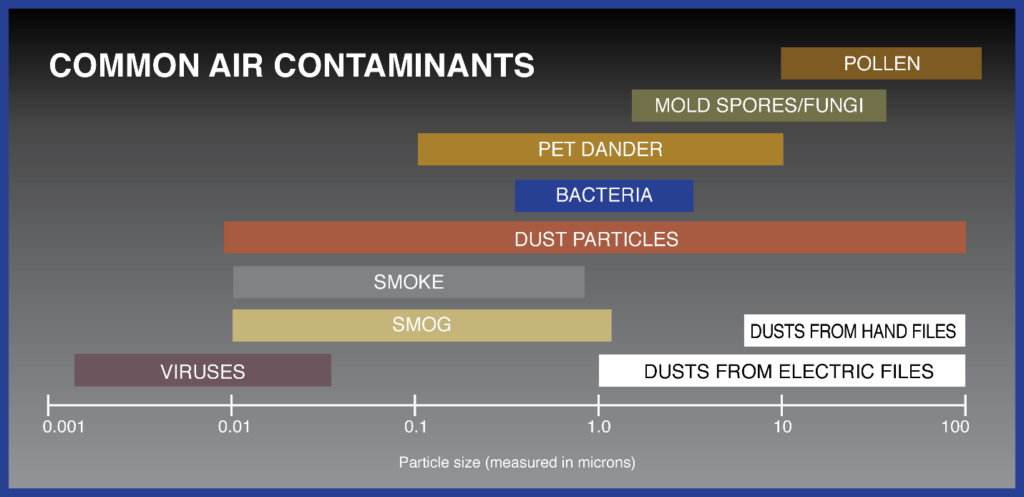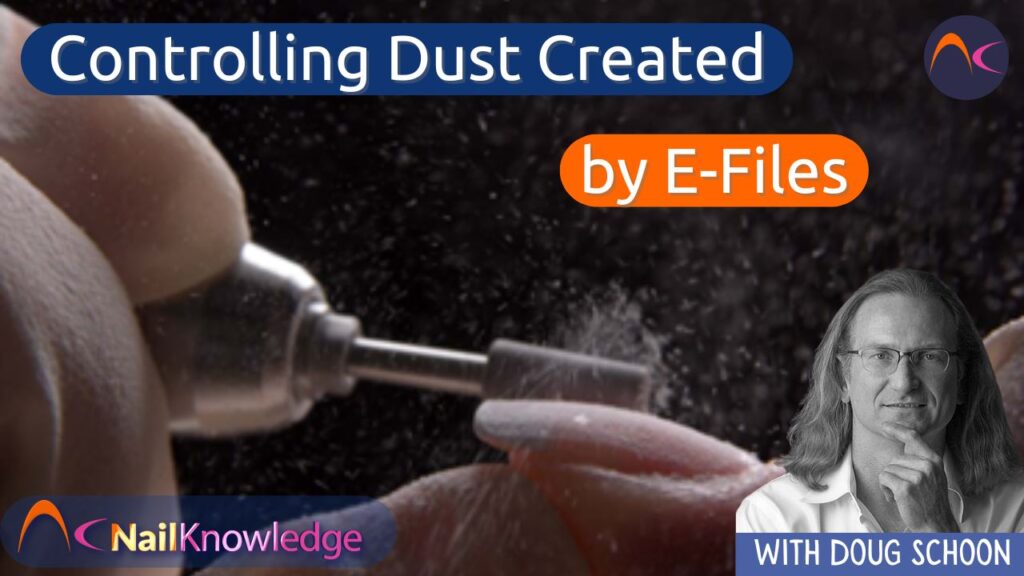Problems may occur when nail technicians ignore excessive inhalation of dust (or vapors). Filing can create a lot of dust that ends up in the breathing zone of the salon worker.
Disposable dust masks can be used to minimize inhalation of dust, as can source capture ventilation. Dust masks should never be used in place of proper ventilation. Even so, when properly used, the correct mask can be an important way to prevent inhalation of excessive amounts of dust particles. They are especially useful to those with pre-existing asthma, allergies, or other breathing related conditions.
Escolhendo as melhores máscaras contra poeira para a segurança do salão de beleza
The best dust masks are specifically designed to block dust. These are thicker than most masks and better able to block most of the fine particles that attempt to penetrate the mask. For any dust mask to work well it must fit well. Better quality dust masks will fit and seal more securely and comfortably and do a better job overall. Dispose of these masks regularly and follow the manufacturer’s directions for use. Avoid using surgical/doctor-type masks since these will not provide enough protection and should not be used in the salon setting. Doctor-type masks may help prevent the spread of germs but are not suitable for salon work.
Reduzindo a poeira do salão de beleza com óleos para unhas de lima elétrica
Também recomendo o uso de óleo de unha para lima elétrica ao limar para reduzir a quantidade de poeira no ar. Esses óleos para unhas são especialmente projetados para trabalhar com limas eletrônicas e essa é uma maneira altamente eficaz de reduzir significativamente a quantidade de poeira fina no ar do salão. A imagem mostra a facilidade com que a poeira se espalha para a zona de respiração quando os óleos para unhas com lima elétrica não são usados.

Image 19 A: A large volume of very small dusts particles are created by electric files.
Comparação do tamanho das partículas de pó de unha: arquivamento manual vs. arquivamento eletrônico

Imagem 18: Tamanho de partícula de vários contaminantes do ar em relação às poeiras criadas por limas manuais e elétricas.
The chart indicates the typical particle size of nail dust when hand and e-filing are compared. Note that e-files create much more of the smaller size dust particles as shown by the range of the hand file and e-file bars on the chart. The larger particles created by hand filling, tend to clump together and quickly fall out of the air to cover the tabletop, and floor, as well as to collect in the hair or inside the collar. They make a mess, but at least they aren’t in the air, so they can’t be breathed.
Riscos de pequenas partículas de poeira de arquivos eletrônicos em salões de beleza
Note that e-files create much more of the smallest dust particles, which are much lighter and can remain suspended in the salon air for hours. These extra-small dusts created by e-filing are a greater inhalation risk, so they are more important to control and avoid. These smaller particles are easier to inhale and get pulled deeper into the lungs. Of course, the lungs are good at handling dusts and getting rid of them. They have to be, we live in a dusty world and this chart shows that many even smaller practices are often inhaled, but that’s not a reason to ignore this issue.
Gerenciamento do pó de unha visível e invisível
Seja qual for o método usado para lixar, é importante manter a área de trabalho limpa e remover toda a poeira visível, mas fique atento à poeira invisível. Aquelas menores que 10 mícrons não serão vistas facilmente e flutuarão pelo salão de modo que todos possam respirá-las. Felizmente, essas poeiras invisíveis são fáceis de controlar:
- Boas práticas de limpeza para controle de poeira.
- Use of appropriate ventilation, e.g. “source capture” systems that remove dust from the source, as they form.
- Uso de uma lixa elétrica de óleo para unhas.
- Uso correto de uma máscara contra poeira adequada.


